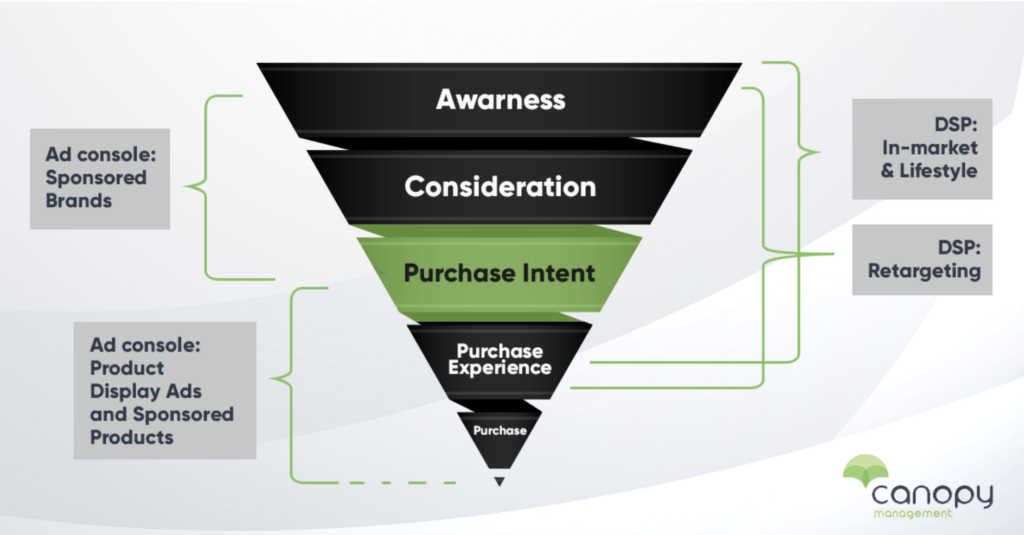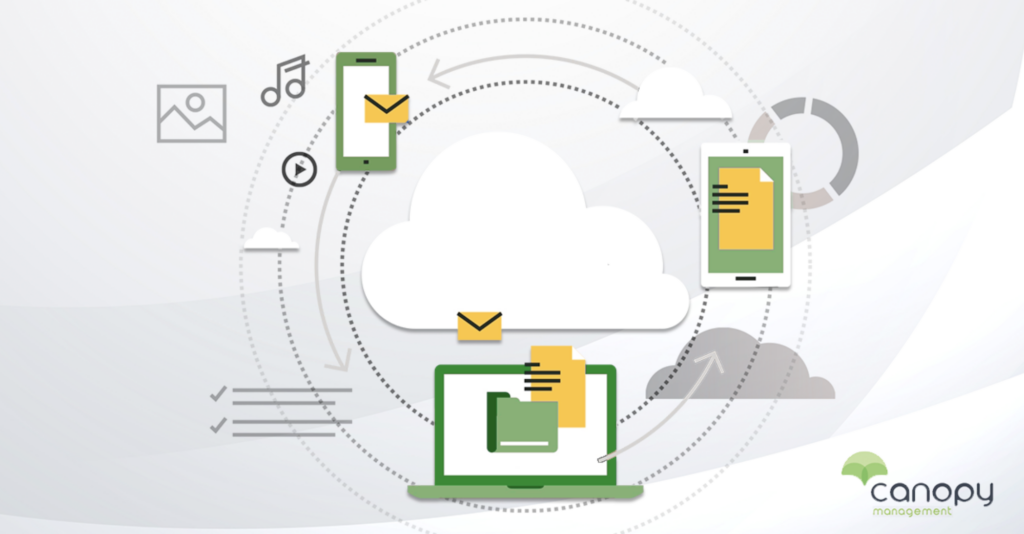Combining AI, Contextual Targeting and DSP to Create “Super Audiences” That Convert!
Updated on 12/14/23 – Learn how clever eCommerce sellers are combining contextual targeting and Amazon’s demand-side platform to build hyper-relevant ad campaigns

Artificial intelligence is red hot right now! That’s because AI can help us do, well, everything.
At the same time, seemingly overnight, Amazon advertising has transitioned from a solid product launch strategy to an essential component of eCommerce success.
This post focuses on how these two topics are linked in a way that is going to help drive traffic to your target audience and put a lot of money in your pocket.
Thinking About Hiring an Amazon Management Agency?
Canopy’s Partners Achieve an Average 84% Profit Increase!
Let’s talkWhether you’re just getting started with digital advertising, or are a seasoned pro, AI, Amazon DSP, and programmatic advertising have combined to supercharge your targeting options.
That’s because the dramatic evolution of AI has acted as a huge lever on Amazon contextual data and dramatically increased the effectiveness and profitability of Amazon’s Demand-Side Platform.
What is Contextual Targeting?
Contextual advertising is a form of targeted advertising backed by AI and machine learning making it possible for your ads to show up on web pages featuring content that’s closely related to your products.
Marketers often find themselves torn between the exciting reach of large-scale advertising and the effectiveness of targeted, niche-down Amazon ad campaigns with their higher CVR (or conversion rate).
At the same time, the third-party cookie continues to lose favor with large digital advertising platforms. That might not concern businesses that are singularly focused on massive reach with their marketing funnel.
However, Amazon and other online sellers who use that data to fine tune their ad placement for their target audience have reason to be concerned.
Access to that data is one of the ways that an Amazon seller is able to properly allocate ad inventory.
Fortunately for Amazon sellers, there’s a work-around.
Before we examine how you can use an Amazon DSP campaign to drive brand awareness and supercharge your Amazon ads, let’s look at how we ended up here.
Changes to Data Privileges
In 2022, Google followed up on Apple’s announcement from April of 2021 updating its iOS operating system with new privacy controls designed to limit digital advertisers from tracking iPhone users. Google revealed its own privacy restrictions that cut tracking across apps on its Android devices.
Since that moment, there’s been an advertising-industry-wide panic as marketers attempt to come up with ways to replace the occasionally annoying, but extremely valuable cookies allowing advertisers to track shopper and buyer behavior.
Third-party sellers weren’t the only ones affected. Facebook said last year that Apple’s privacy changes would cost them approximately $10 billion in lost ad sales.
It’s hard to imagine that “cookies,” – those small pieces of data that catalog the behavior of users on a particular website – would have such a massive impact, but they do.
Behavioral (or Audience) Targeting
Cookies are a large part of what makes behavioral (or audience) targeting possible.
Behavioral targeting tracks people’s activities (with cookies) to better understand which products, campaigns, or ad format they are attracted to. Leveraging behavioral data allows advertisers to adjust their marketing based on several different sources of data. It might be data from website engagement or the behavior of shoppers and purchasers in an online marketplace such as Amazon.
In either case, availability of the data that’s generated by behavioral marketing has been trending downward. That’s led to a resurgence in a variety of different “cookieless” targeting strategies that allow marketers to continue to source the necessary data points they use to build their advertising campaigns.

Cookieless Targeting?
Instead of sourcing user data from behavior, cookieless targeting collects data from the ad environment that a user is navigating. Cookieless campaigns use an algorithm to target ad placements based on keywords, website content, and other metadata attributed to the content that online consumers are browsing at any one time.
What’s made this all possible has been the same advances in artificial intelligence and data modeling that over the last few years has also fueled the innovations in livestream selling, augmented reality, and throughout eCommerce.
Identify (Real-Time) Audiences with Contextual Advertising
There are three primary tactics that allow marketers to replace third-party cookies: anonymous first-party data, interest-based groups such as Google’s Topics, and contextual targeting.
Although a variation of contextual advertising has been around for a long time, the evolution of artificial intelligence has dramatically accelerated the level of interest surrounding this data-collection strategy.
By closely examining user behavior, contextual advertising capitalizes on ads based on the environment in which the ad appears. For example, it might mean ads for a running watch or shoes on a news article about trail running, or it could be advertisements for the newest iPhone on a tech site.
In the first case above, instead of anticipating that a shopper is still interested in running because they signed up for an industry newsletter a year ago, contextual advertising lets advertisers know that shoppers are browsing for new trail shoes right now!
More importantly, contextual targeting is not subject to privacy regulations because it doesn’t use or collect cookies.

Data Just Keeps Getting Smarter
It might be easier to talk about the aspects of eCommerce that haven’t been affected by the ongoing advancement in artificial intelligence and data modeling.
The increased sophistication of inventory management platforms, omnichannel product discovery, and the rise of highly-effective voice-enabled shopping are just a few of the areas that have benefited from the relentless upgrades to AI.
Now, AI is helping analyze the “essence” of a web page’s content. That means that you can use that information to target shoppers with a closely “matched” ad campaign. Most of the time, that’s going to result in the right campaign being run to the right audience on the correct platform.
That sounds like a conversion to me.
Contextual ad tech strategies allow marketers to target “context” by a prompt including a topic or keywords. In the contextual ad campaign set up, marketers can identify phrases and keywords that are to be included or excluded.
After that, algorithms help determine the optimum ad placements leading to an ad impression using artificial intelligence.
Contextual Advertising + DSP = Ad Accuracy
The world is moving faster than ever, sometimes pivoting on a dime.
Amazon sponsored product, sponsored brand, and sponsored display ads are extraordinary assets for an online advertiser.
Still, the ability of contextual DSP advertising to provide marketers with real-time metrics is a game changer.
With the right Demand Side Platform Agency, eCommerce sellers can use contextual targeting to identify ideal ad-campaign audiences in seconds, then quickly measure the results. That transparency makes it possible to adjust campaign context and keywords in real-time to increase performance, and reduce ad spend.
I’ve said before that I feel that Amazon DSP is the best kept secret on the Amazon advertising platform. As the founder and CEO of Canopy Management, the fastest growing Amazon Management Agency in North America, I’ve been privileged to watch the exciting results that pour in from our team of DSP experts.
If I was going to offer any advice to eCommerce sellers right now, it would be to look more closely at how you are able combine Amazon DSP and contextual targeting to level up your business.
That will more than make up for the loss of cookies in 2024.


